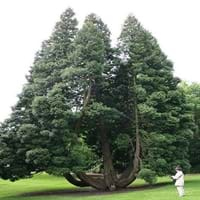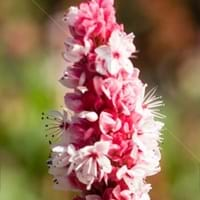Life Span
Perennial
Perennial
Type
Needled or Scaled Evergreen
Flowering Plants
Origin
Northwestern United States, Canada
Eastern Asia
Types
Not available
Darjeeling Red , Donald Lowndes , Superba
Habitat
Lowland, Moist Soils, Swamps
High elevation
USDA Hardiness Zone
5-7
5-9
Sunset Zone
A3, 1a, 1b, 2a, 2b, 3a, 3b, 4, 5, 6, 7, 8, 9, 14, 15, 16, 17, 18, 19, 20, 21, 22, 23, 24
2a, 2b, 3a, 3b, 4, 5, 6, 7, 8, 9, 14, 15, 16, 17
Habit
Pyramidal
Clump-Forming
Flower Color
Light Yellow
White
Flower Color Modifier
Bicolor
Bicolor
Fruit Color
Brown, Sienna
Not Available
Leaf Color in Spring
Dark Green
Red, Burgundy, Silver
Leaf Color in Summer
Dark Green
Red, Burgundy, Silver
Leaf Color in Fall
Dark Green
Red, Burgundy, Silver
Leaf Color in Winter
Dark Green, Bronze
Not Available
Leaf Shape
Scale-like imbricate
Bi-lobed
Plant Season
Spring, Summer, Fall, Winter
Spring, Summer, Fall
Sunlight
Full Sun, Partial Sun
Full Sun, Partial Sun, Partial shade
Type of Soil
Loam
Clay, Loam, Sand
The pH of Soil
Acidic, Neutral
Acidic, Neutral, Alkaline
Soil Drainage
Well drained
Average
Bloom Time
Spring
Summer, Late Summer
Tolerances
Pollution, Soil Compaction
Light Frost
Where to Plant?
Ground
Ground
How to Plant?
Cuttings, Hardwood Cuttings, Rooted stem cutting, Seedlings
Layering, Root Division, Softwood cuttings, Stem Cutting
Plant Maintenance
Medium
Medium
Watering Requirements
Average Water Needs, Needs a lot of moisture in the growing season, when new, water every week
Never Over-water
In Summer
Lots of watering
Lots of watering
In Spring
Moderate
Moderate
In Winter
Average Water
Average Water
Soil pH
Acidic, Neutral, Alkaline
Acidic, Neutral, Alkaline
Soil Type
Clay, Loam, Sand
Clay, Loam, Sand
Soil Drainage Capacity
Well drained
Average
Sun Exposure
Full Sun
Full Sun, Partial Sun, Partial shade
Pruning
Remove damaged leaves, Remove dead branches, Remove dead leaves
Remove damaged leaves, Remove dead branches, Remove dead leaves
Fertilizers
All-Purpose Liquid Fertilizer
All-Purpose Liquid Fertilizer
Pests and Diseases
Armillaria root rot, Bark beetles
Fungal leaf spots
Plant Tolerance
Drought
Drought
Flowers
Insignificant
Insignificant
Flower Petal Number
Not Available
Single
Fragrant Bark/Stem
Yes
No
Foliage Texture
Fine
Medium
Foliage Sheen
Glossy
Matte
Attracts
Not Available
Not Available
Allergy
Asthma, contact allergic dermatitis, Urticaria
Diarrhea, Stomach pain
Aesthetic Uses
Not Used For Aesthetic Purpose
along a porch, deck or patio, bank hedging, Cottage Garden
Beauty Benefits
Not Available
Skin irritation
Environmental Uses
Air purification
Air purification
Medicinal Uses
Bronchitis, Cold, Cough, Fever, Sore throat
bowel syndrome, Gastrointestinal disorders, hypertension
Part of Plant Used
Branch, Inner Bark, Leaves, Wood
Root, Root bark
Other Uses
Dugout canoes, Making deodorants, Medicinal oil, Paper pulp, Pulp can be used to make rope place mats and other goods, Used as an insecticide, Used to make baskets
Not Available
Used As Indoor Plant
No
No
Used As Outdoor Plant
Yes
Yes
Garden Design
Feature Plant, Hedges, Screening / Wind Break
Container, Mixed Border
Botanical Name
THUJA plicata
PERSICARIA microcephala 'Dragon's Eye'
Common Name
Giant Arborvitae, Green Giant Arborvitae, Western Arborvitae, Western Red Cedar
Dragon's Eye Fleeceflower, Fleeceflower
In Hindi
Pacific redcedar
fleeceflower
In German
Riesen-Lebensbaum
fleeceflower
In French
Thuja plicata
fleeceflower
In Spanish
Thuja plicata
Polygonum affine
In Greek
Thuja plicata
fleeceflower
In Portuguese
Thuja plicata
fleeceflower
In Polish
Żywotnik olbrzymi
fleeceflower
In Latin
Thuja plicata
fleeceflower
Phylum
Pinophyta
Vascular plant
Class
Pinopsida
Agaricomycetes
Order
Pinales
Caryophyllales
Family
Cupressaceae
Polygonaceae
Clade
Not Available
Angiosperms, Core eudicots, Eudicots
Tribe
Not Available
Unknown
Subfamily
Not Available
Not Available
Number of Species
Not Available
Not Available
Importance of Western Red Cedar and Fleeceflower
Want to have the most appropriate plant for your garden? You might want to know the importance of Western Red Cedar and Fleeceflower. Basically, these two plants vary in many aspects. Compare Western Red Cedar and Fleeceflower as they differ in many characteristics such as their life, care, benefits, facts, etc. Every gardener must at least have the slightest clue about the plants he wants to plant in his garden. Compare their benefits, which differ in many ways like facts and uses. The medicinal use of Western Red Cedar is Bronchitis, Cold, Cough, Fever and Sore throat whereas of Fleeceflower is bowel syndrome, Gastrointestinal disorders and hypertension. Western Red Cedar has beauty benefits as follows: Not Available while Fleeceflower has beauty benefits as follows: Not Available.
Compare Facts of Western Red Cedar vs Fleeceflower
How to choose the best garden plant for your garden depending upon its facts? Here garden plant comparison will help you to solve this query. Compare the facts of Western Red Cedar vs Fleeceflower and know which one to choose. As garden plants have benefits and other uses, allergy is also a major drawback of plants for some people. Allergic reactions of Western Red Cedar are Asthma, contact allergic dermatitis and Urticaria whereas of Fleeceflower have Diarrhea and Stomach pain respectively. Having a fruit bearing plant in your garden can be a plus point of your garden. Western Red Cedar has no showy fruits and Fleeceflower has no showy fruits. Also Western Red Cedar is not flowering and Fleeceflower is not flowering . You can compare Western Red Cedar and Fleeceflower facts and facts of other plants too.





